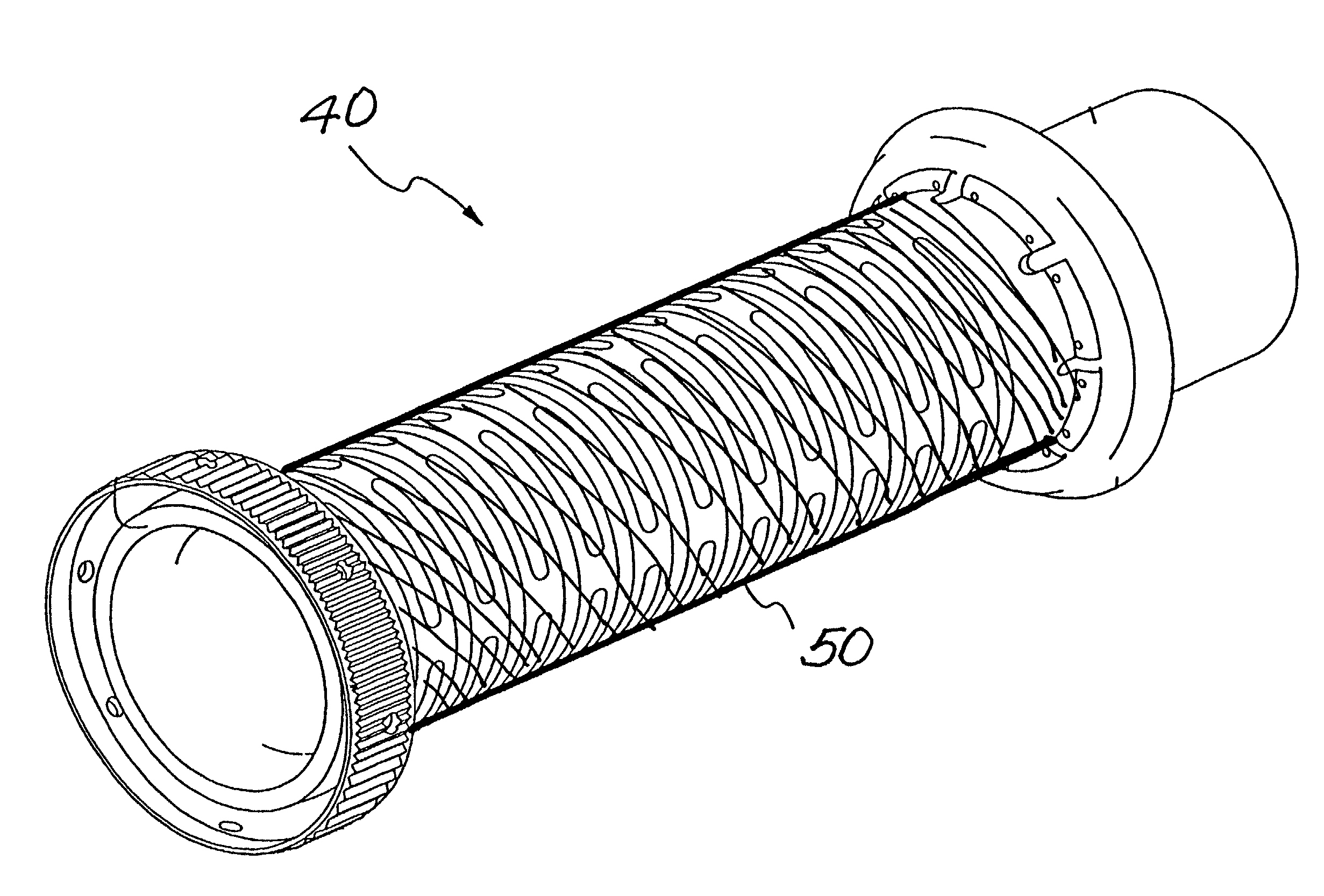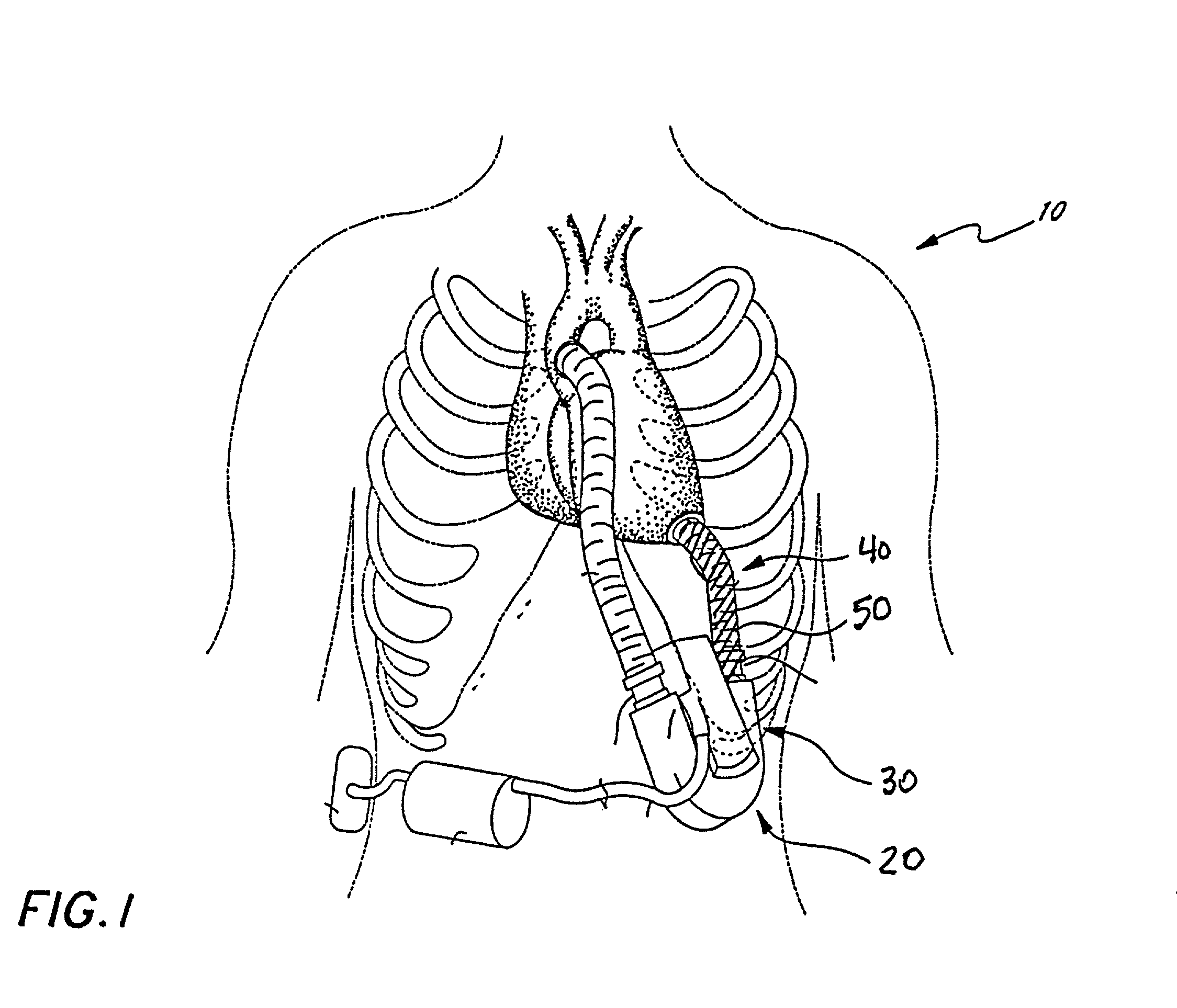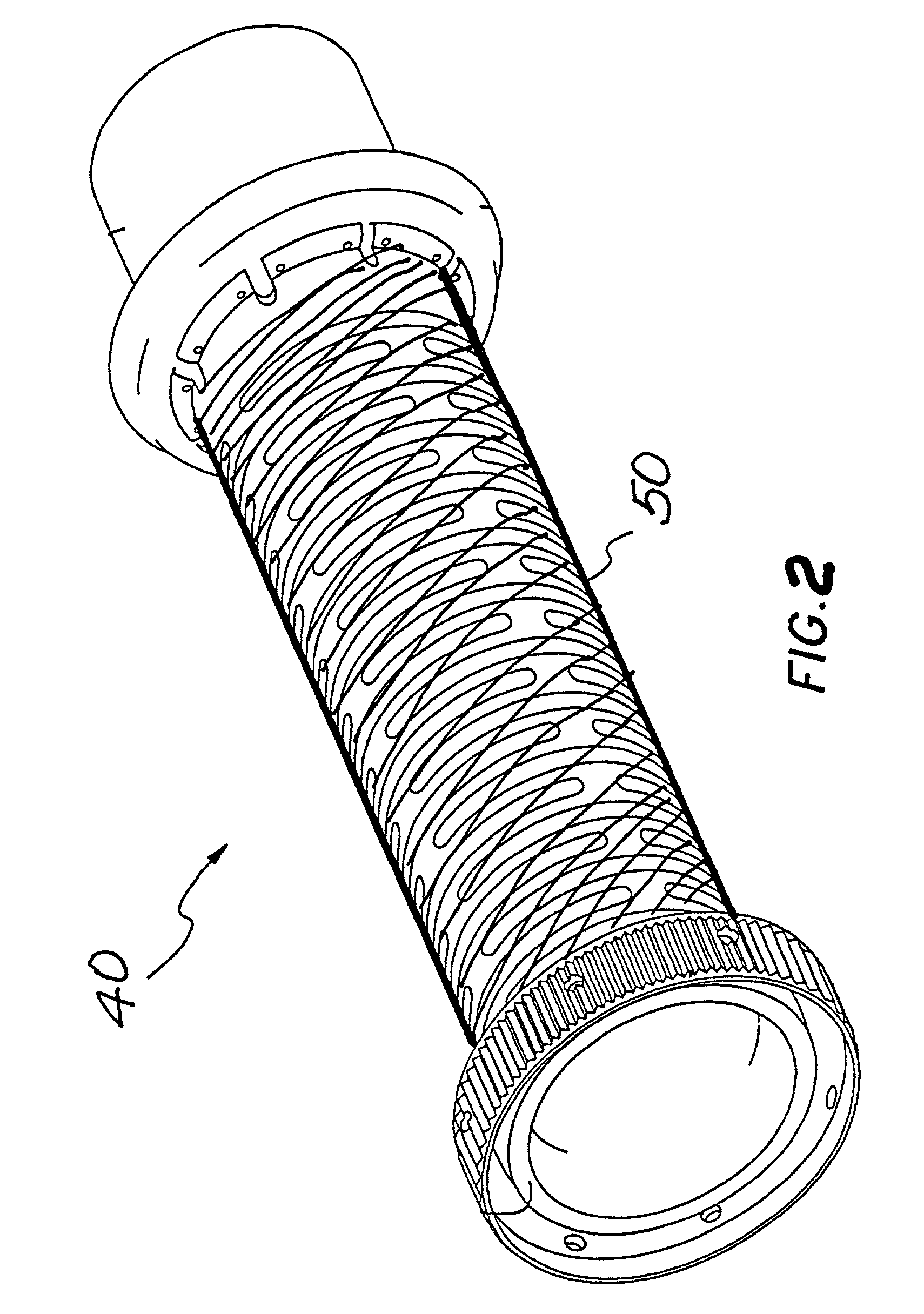Method for substantially non-delaminable smooth ventricular assist device conduit and product from same
a technology of ventricular muscle and assist device, which is applied in the direction of catheters, blood vessels, therapy, etc., can solve the problems of ventricular muscle over-stretches, high cost associated with the condition, and shortness of breath, so as to achieve non-thrombogenic porous, not safe for the patient, and high cost. the effect of the condition
- Summary
- Abstract
- Description
- Claims
- Application Information
AI Technical Summary
Benefits of technology
Problems solved by technology
Method used
Image
Examples
Embodiment Construction
[0034]With reference to FIGS. 1 and 2, a living human host patient 10 with an open chest is shown in fragmentary front elevational view, and with parts of the patient's anatomy shown in phantom or removed solely for better illustration of the salient features of the present invention. Surgically implanted into the patient is the pumping portion 20 of a ventricular assist device, generally referenced with the numeral 30. Ventricular assist device 30 includes an inflow conduit 40 which further includes a substantially non-porous conduit 50 for communicating blood from the patient's left ventricle into the pumping portion 20. As shown in FIG. 2, conduit 50 comprises a flexible, porous tubular substrate to which a substantially non-porous thermoplastic elastomer is substantially non-delaminably bonded in accordance with a method of the invention. An end of inflow conduit 40 is connected to the patient's heart by sutures so that blood flow communication is established and maintained.
[003...
PUM
| Property | Measurement | Unit |
|---|---|---|
| water entry pressure | aaaaa | aaaaa |
| pressure | aaaaa | aaaaa |
| thickness | aaaaa | aaaaa |
Abstract
Description
Claims
Application Information
 Login to View More
Login to View More - R&D
- Intellectual Property
- Life Sciences
- Materials
- Tech Scout
- Unparalleled Data Quality
- Higher Quality Content
- 60% Fewer Hallucinations
Browse by: Latest US Patents, China's latest patents, Technical Efficacy Thesaurus, Application Domain, Technology Topic, Popular Technical Reports.
© 2025 PatSnap. All rights reserved.Legal|Privacy policy|Modern Slavery Act Transparency Statement|Sitemap|About US| Contact US: help@patsnap.com



